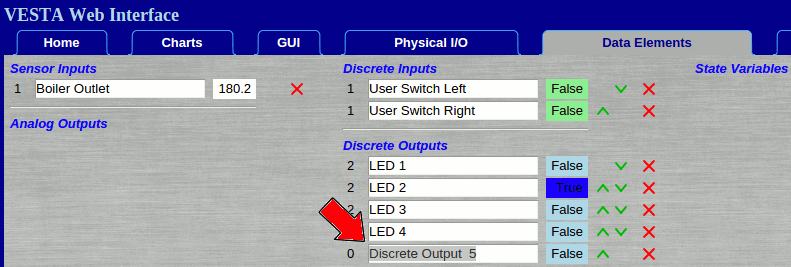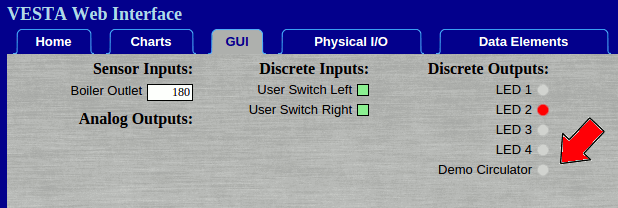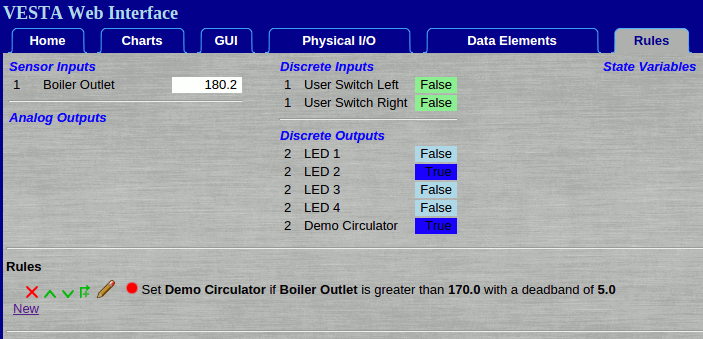Setting Up The Vesta Controller
In order to activate the relay with the Vesta, you must configure the Vesta to use the discrete output channel that the relay is connected to. In this example, we'll connect the RC-4DD to Vesta discrete outputs 5-8. That means that relay 1 in the RC-4DD is Vesta discrete output 5, relay 2 is output 6, and so on. We're using relay 1, controlled by discrete output channel 5. The overall process for configuring the Vesta is covered in the User's Guide, but we'll show the steps for this example here.
We'll go to the 'Physical I/O' tab on the Vesta and find the discrete output section. On the line for channel 5, we'll click 'Create Element':

Next we'll go to the 'Data Elements' tab and rename our discrete output to 'Demo Circulator':

Eventually we'll have rules to control the circulator, but for now we can test it by going to the control graphical user interface. Click the 'GUI' tab on the Vesta user interface twice:

Clicking on the button next to 'Demo Circulator' will turn the circulator on and off. If power isn't applied to the circulator yet, you'll still hear the relay click on and off in the RC-4DD.
Rules
Finally, we need rules to control the circulator. In this example, we'll turn on the circulator when the boiler outlet temperature goes above 170, and turn it off when the boiler outlet drops below 165. This is accomplished with a differential rule. Details are documented in the rule programming manual, but the rule that we need looks like this:

The 'deadband' term in this rule will keep the circulator on until the temperature drops 5 degrees below the setpoint. This will prevent the circulator from cycling on and off too frequently when the temperature is fluctuating right around the setpoint of 170.
Summary
That's it - you now have a circulator that will turn on and off automatically based on boiler outlet temperature. It can be monitored from anywhere, and the datalogs will allow you to go back and see when and for how long the circulator was active.
You can of course use more complex logic, change setpoints, and add other devices.
